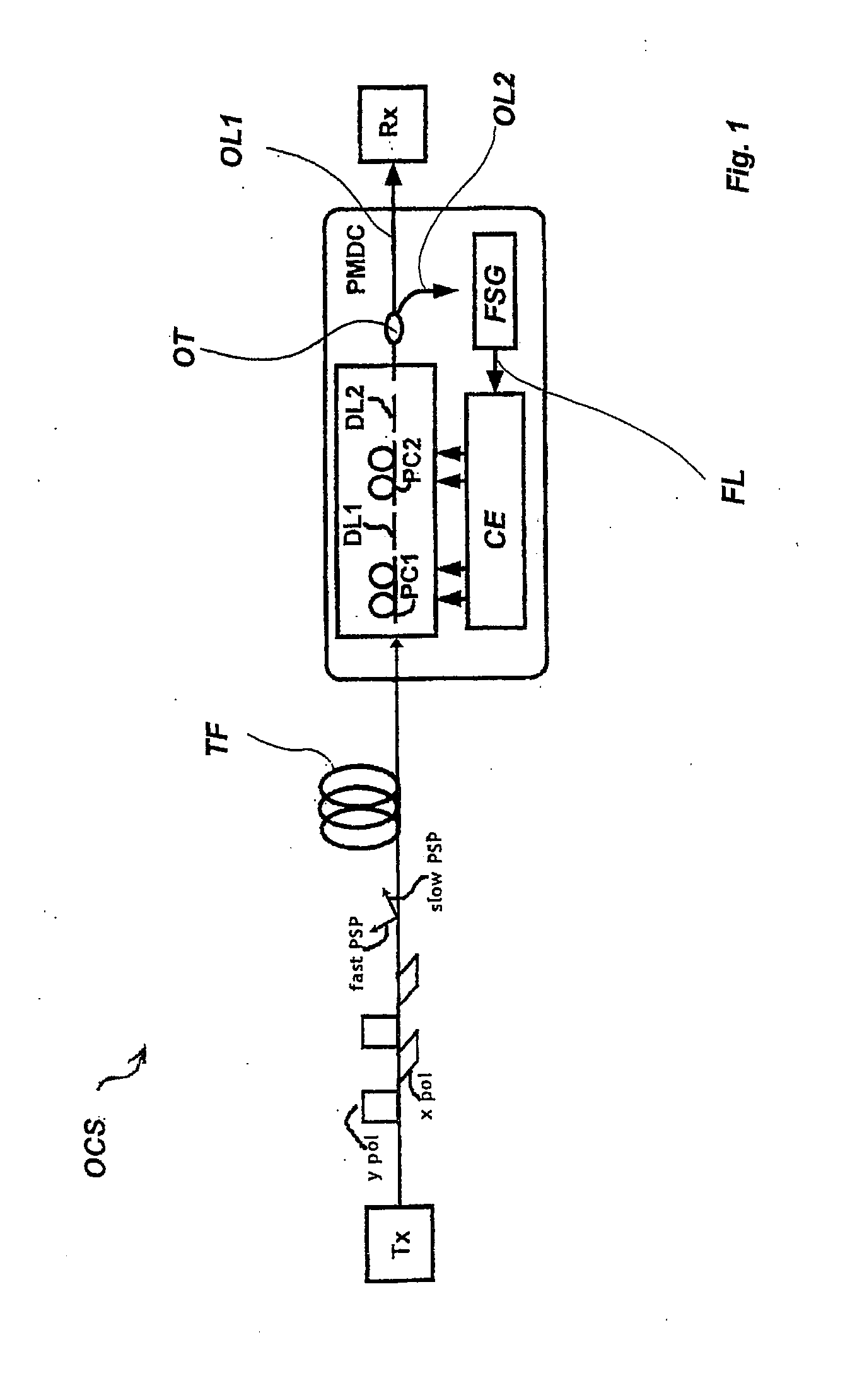Apparatus and method for compensating polarization mode dispersion
a technology of polarization mode and compensator, applied in the field of fiber optic transmission systems, can solve the problems that the known feedback controlled optical pmd compensator (pmdc) for compensating for fiber pmd is not applicable to modulation formats using orthogonal polarization components, and the netlinear penalties are not applicable, so as to improve the signal to noise ratio of signals, improve the effect of signal to noise ratio, and easy averag
- Summary
- Abstract
- Description
- Claims
- Application Information
AI Technical Summary
Benefits of technology
Problems solved by technology
Method used
Image
Examples
first embodiment
[0036]the feedback signal generator FSG is shown in FIG. 2 and designated there as FSG1.
[0037]The feedback signal generator FSG1 comprises three polarizers PO1, PO2 and PO3 for converting the extracted optical signal to three optical signal components with different defined states of polarization.
[0038]The polarizer PO1 converts the extracted optical signal to optical signal components of the state of + / −45° linear polarization. The polarizer PO2 converts the optical signal to the state of horizontal / vertical linear polarization, and the polarizer PO3 converts the optical signal to the state of left / right circular polarization.
[0039]The optical output of each polarizer PO1, PO2 and PO3 is connected to a respective fast photodiode FPD1, FPD2 and FPD3. The photodiodes FPD1, FPD2 and FPD3 are adapted for transforming the optical signal components into electrical rf power signal components, wherein each electrical signal component represents one of the defined states of polarization. In...
second embodiment
[0049]The diagram of FIG. 5 shows that the sum of the distances di, vertical axis named “sum di”, in the Poincaré sphere is dependent on the input polarization state of the PMDC, axis named “theta in rad”, and the fiber DGD, axis named “DGD in ps”. The distance di is monotonically decreasing in the region of low fiber DGD, which means low distortion from the fiber PMD, and hence fulfills the requirement for a feedback signal. For compensating the fiber PMD, a suitable feedback routine can minimize the sum of the distances di for minimizing the DGD. Exemplary feedback routines stated below can be performed by the above described feedback signal generators FSG; FSG1 or a feedback signal generator FSG2, shown in FIG. 6, which is described below. The control electronics CE can adapt the first-stage polarization converter PC1 and the second-stage polarization converter PC2 such, that the feedback signal is minimized to reduce the DGD ideally to zero.
[0050]For compensating the fiber PMD e...
PUM
 Login to View More
Login to View More Abstract
Description
Claims
Application Information
 Login to View More
Login to View More - R&D
- Intellectual Property
- Life Sciences
- Materials
- Tech Scout
- Unparalleled Data Quality
- Higher Quality Content
- 60% Fewer Hallucinations
Browse by: Latest US Patents, China's latest patents, Technical Efficacy Thesaurus, Application Domain, Technology Topic, Popular Technical Reports.
© 2025 PatSnap. All rights reserved.Legal|Privacy policy|Modern Slavery Act Transparency Statement|Sitemap|About US| Contact US: help@patsnap.com



